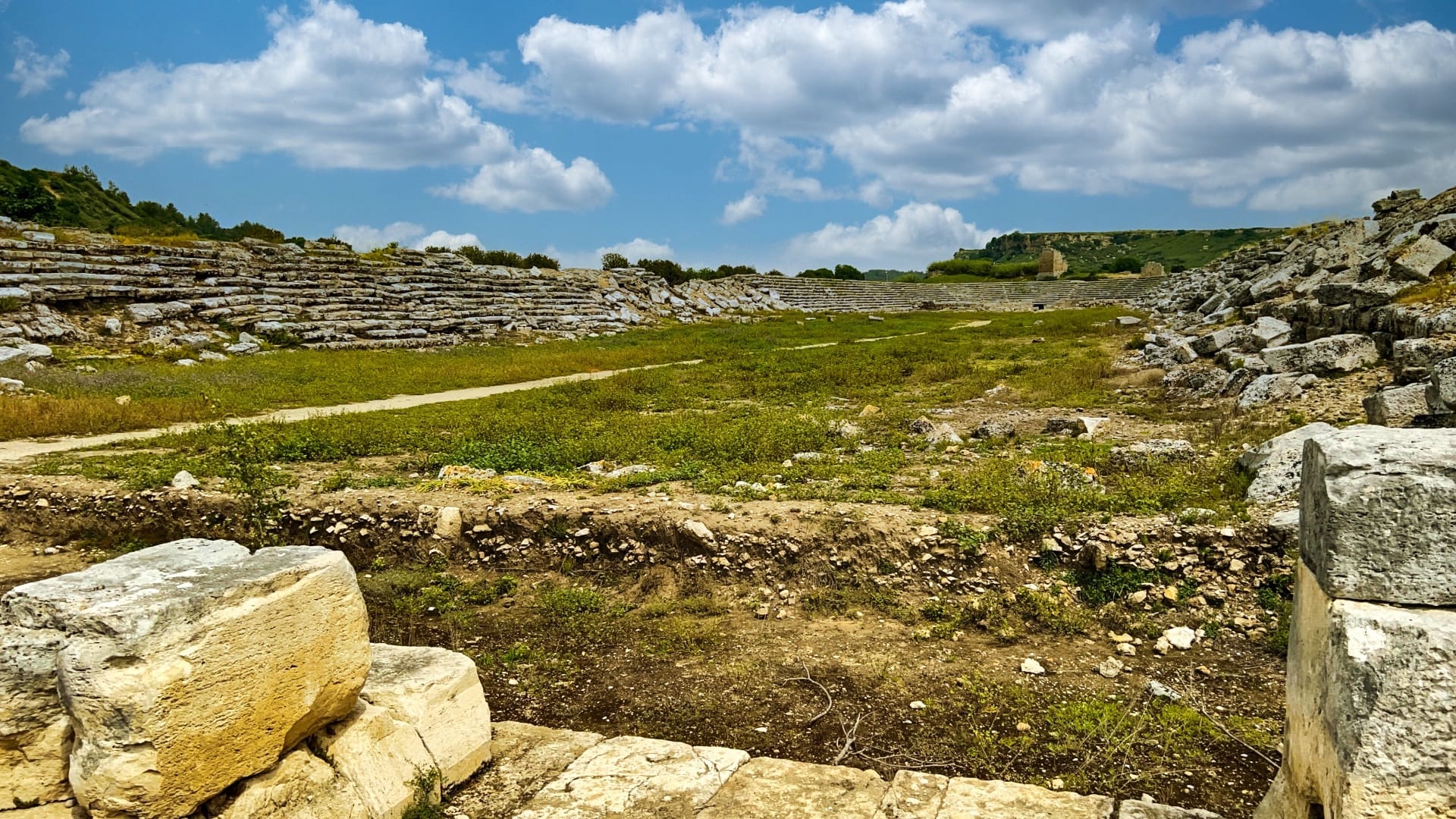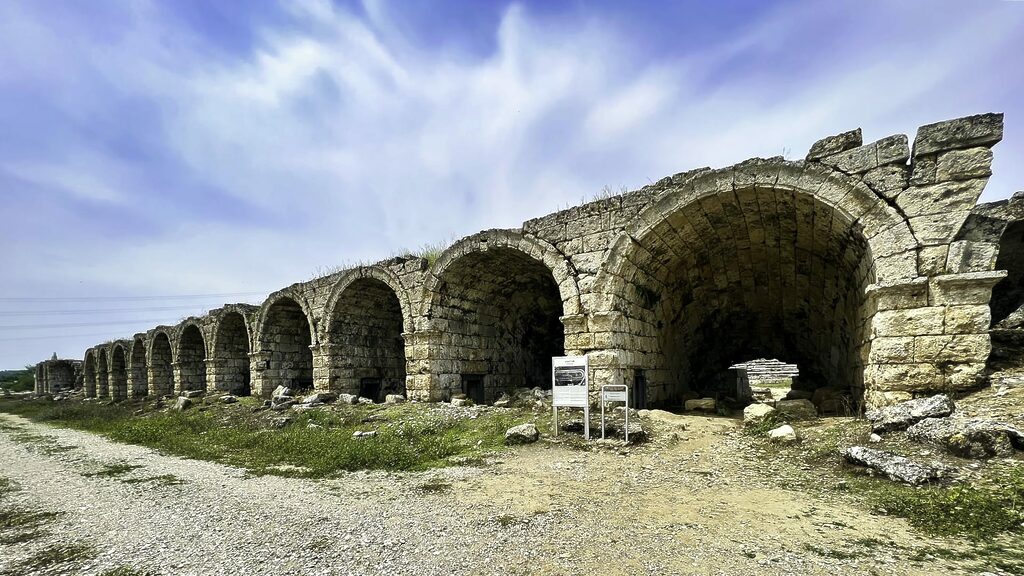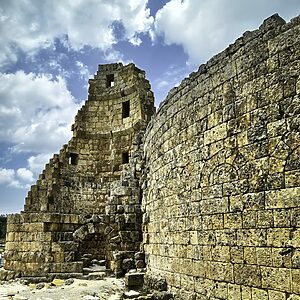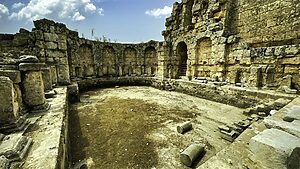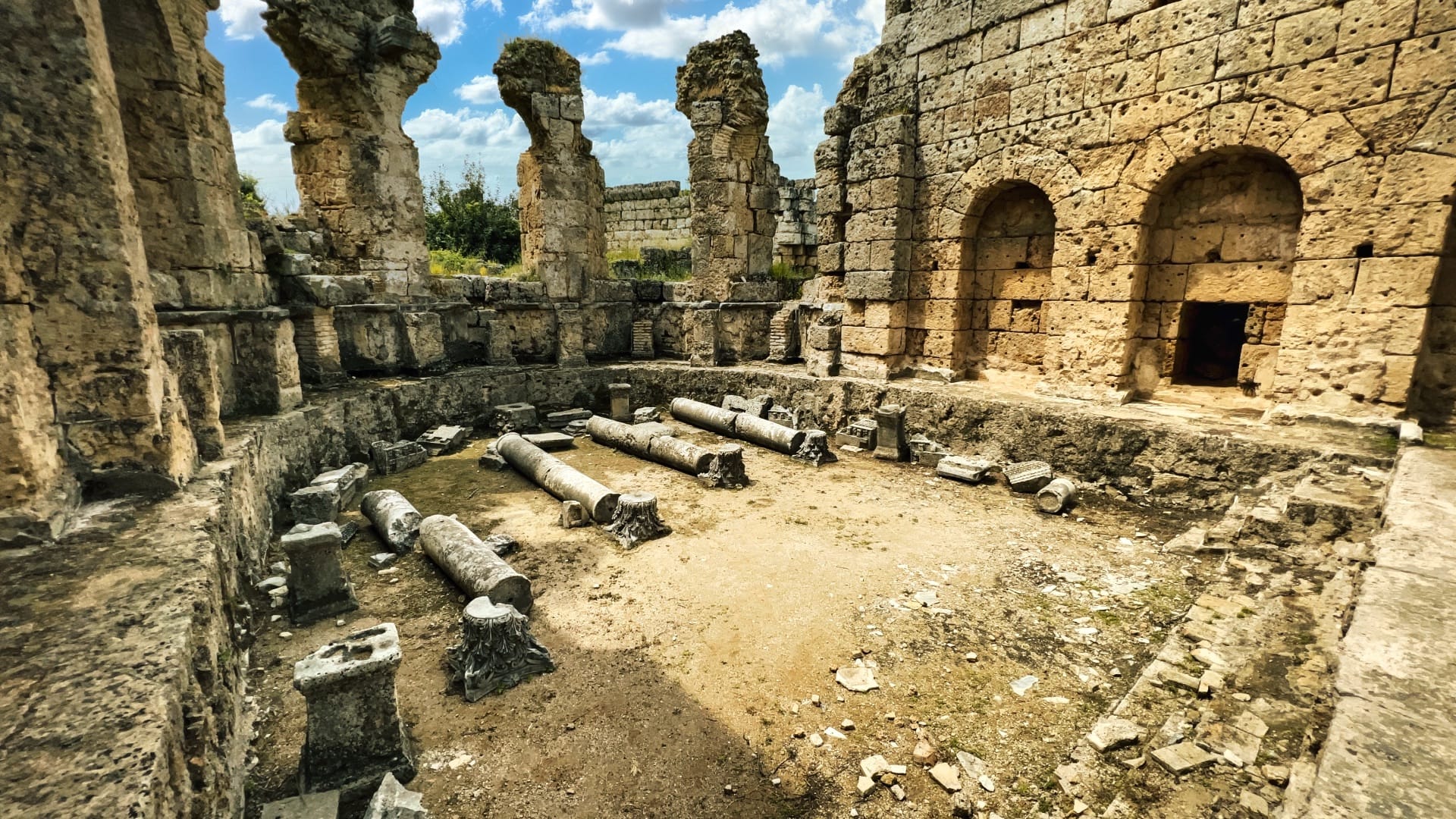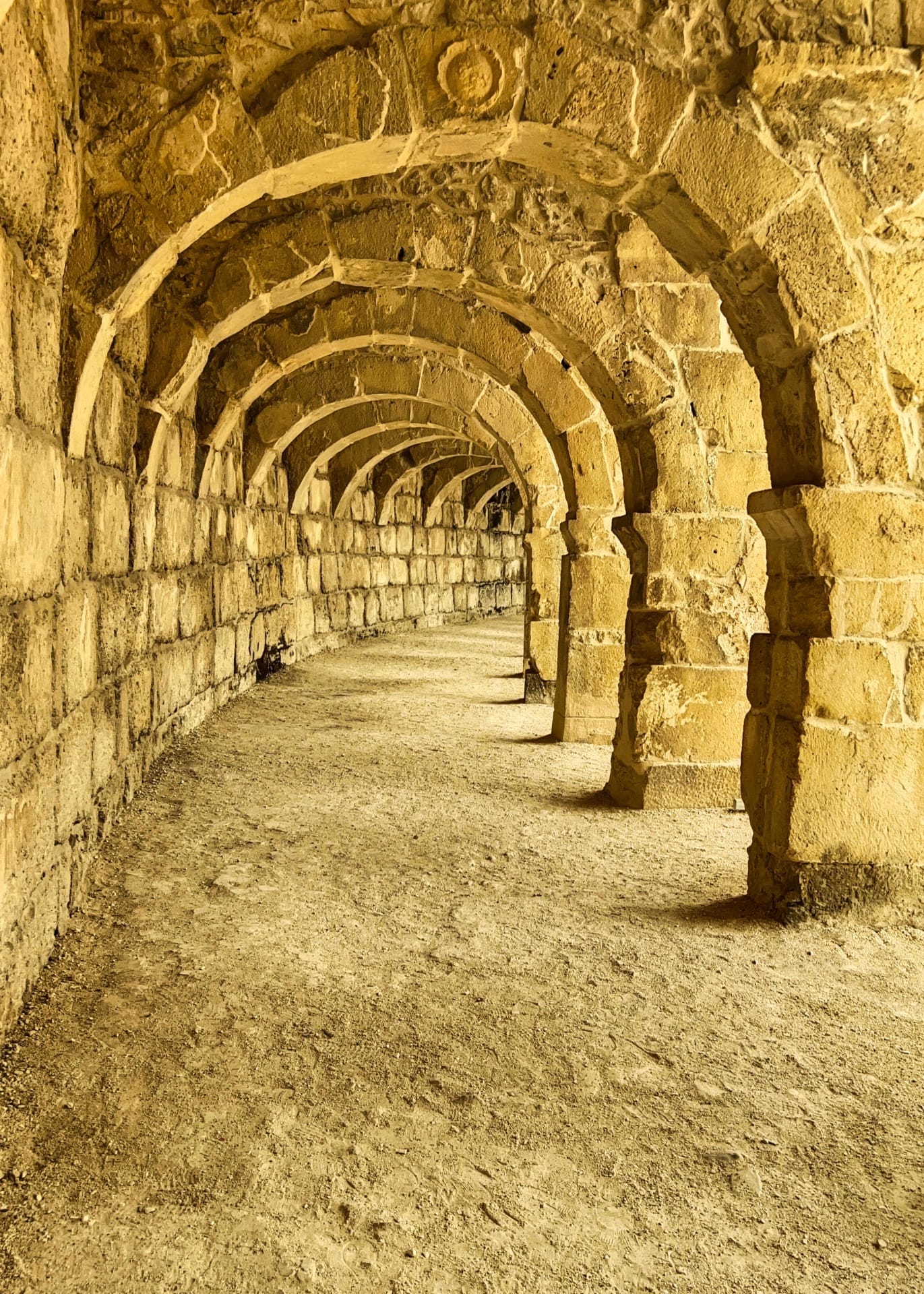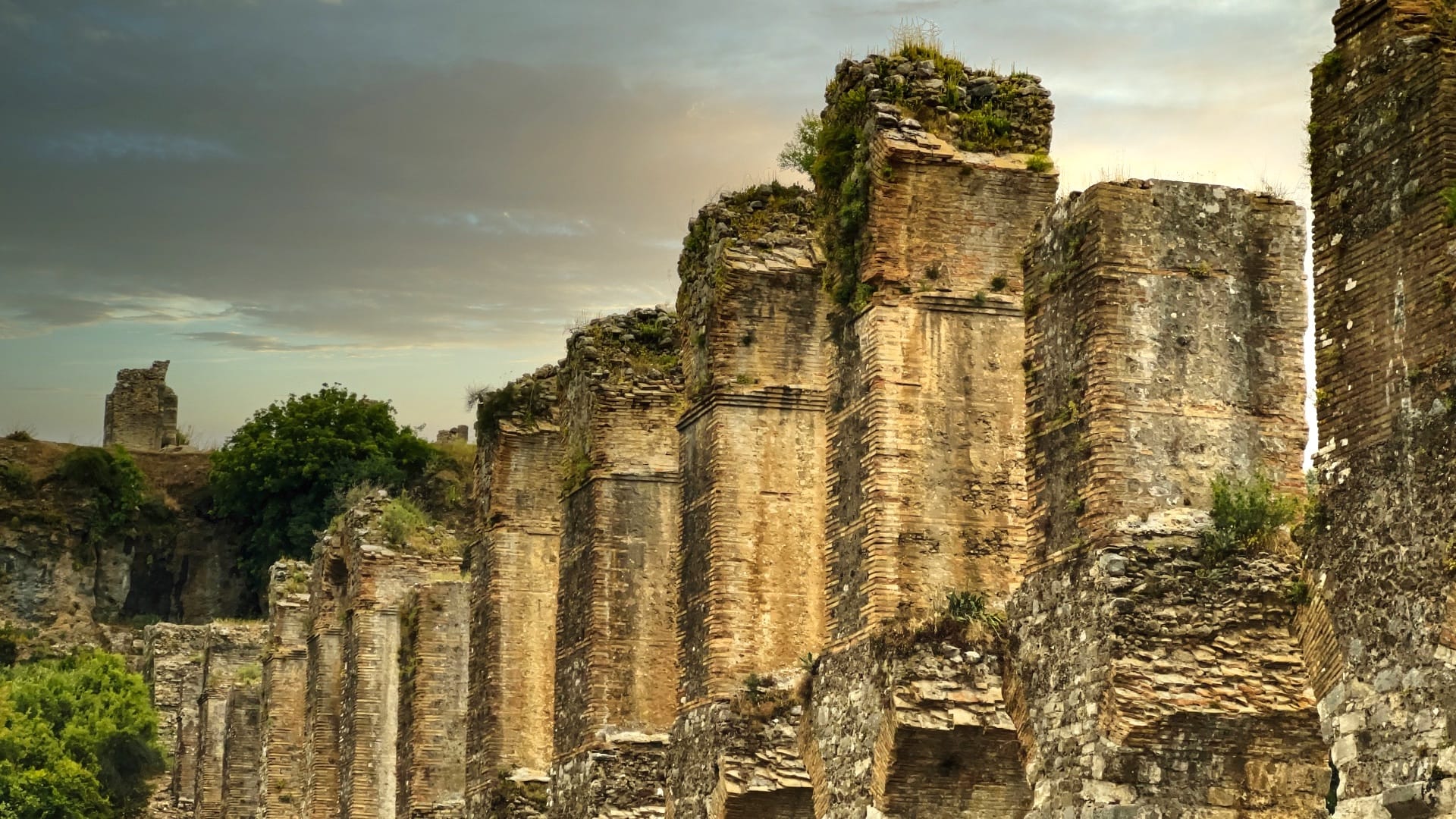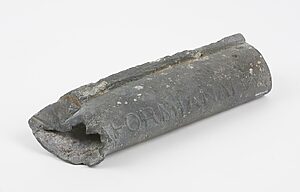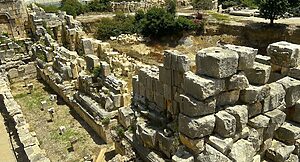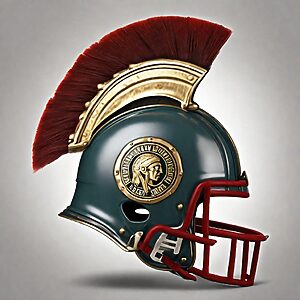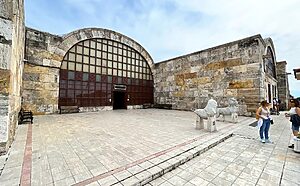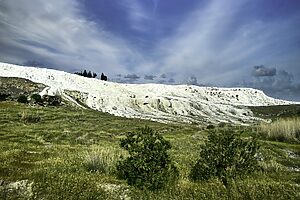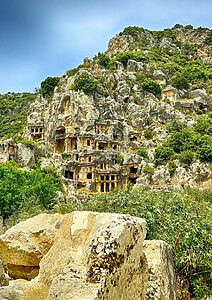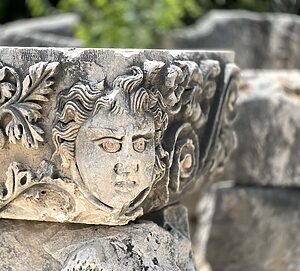Located in the southwestern quadrant of what is now Turkey, the Antalya Province encompasses a surplus of standout Greco-Roman cities. A few of which exhibited some of the best Roman architecture outside of Rome itself. Unfortunately, the Ottomans didn't give the Romans enough time to pack it all up before kicking them to their own stone-carved curb in 1391.
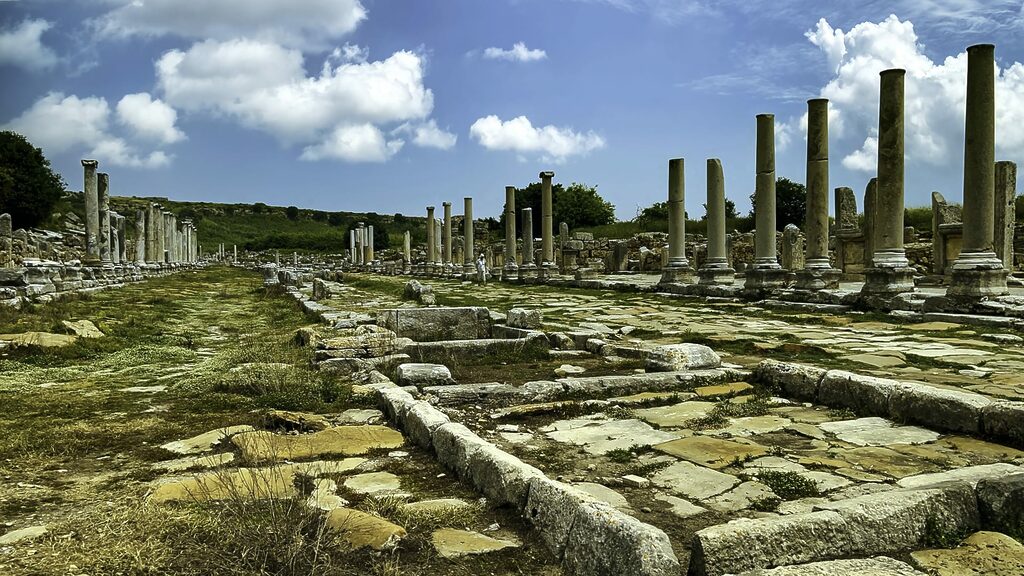
Turkey's Antalya Province is littered with cities you've likely never heard of.
Several bygone boroughs of Asia Minor—including Perge, Aspendos, Myra, Hierapolis, and other oddly named towns—were once the jewels of the Eastern Roman Empire (aka, the Byzantines).
During their occupation of this region from 133 BCE, the Byzantines built cities that rivaled the ones back home in Rome. Their epic cities showcased the area's wealth and architecture, impressing rural rubes and country bumpkins for miles around.
To be fair, however, these cities have seen better days. Or I should say, better centuries. Today, these cities are mostly in tatters, though not as in-tatters as you might expect after nearly 2,000 years.
In fact, Perge, Aspendos, and Myra, each contain structures that have defied time, erosion, and spray paint-wielding teenage punks with no appreciation for their own country's history.
Thankfully, these once-mighty metropolises continue to vividly evoke an era of sophistication and civilization. An era when the idea of building a walkable, “15-minute city” was neither a choice, nor an international conspiracy. It was just the right way to do things.
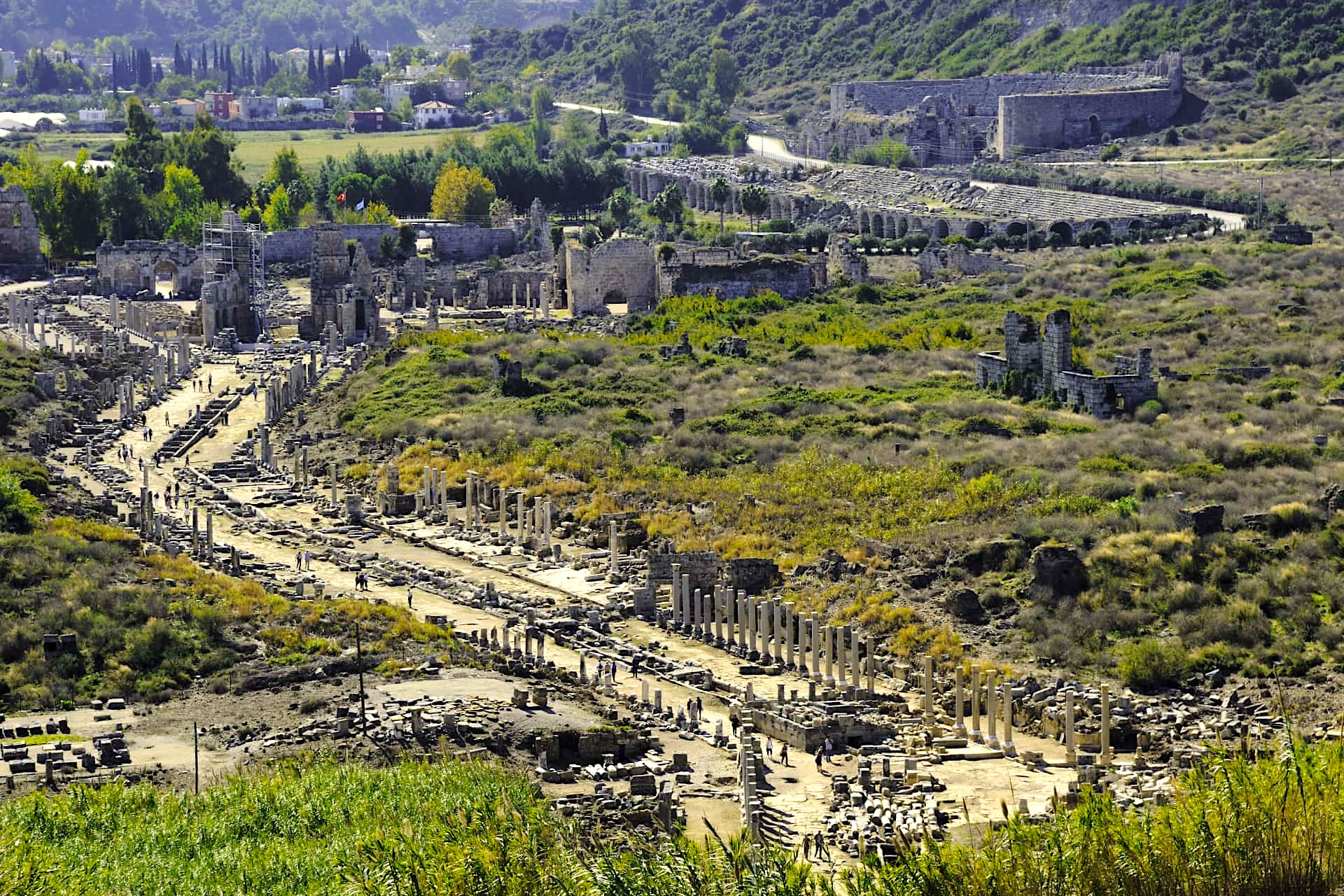
The city of Perge was the Las Vegas of its time.
In Antalya Province—a dry region where temperatures frequently exceed 90°F—water conservation is super important. So it was pretty baller of Perge's city fathers to install an exposed water channel running down the center of main street.
The channel then flowed into a series of fountains, cascading into pools like the Fountains of Bellagio. Had their Department of Water Management been able to sync them to Celine Dion songs, they would've undoubtedly done that, too. The problem wasn't a matter of cost, it was only that Celine hadn't been born yet.
Perge got a massive make-over thanks to money.
During the 2nd Century CE, the town of Perge went on a mad construction and spending spree. It was fueled by Rome's largess, generous local philanthropists, and the sale of a mint-condition, “Christ, The Redeemer” comic book, issue number one. (It's the one with his origin story, later reprinted in the Bible.)
Perge soon became one of the most beautiful towns in Turkey. Among its many impressive buildings, the city built a theater, a hippodrome, and the apparently obligatory Temple of Artemis. I mean, screw Zeus and all those other gods, amiright?
Artemis' most morally flexible flock.
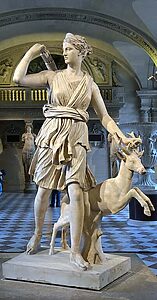
The original Greek citizens of ancient Antalya Province worshiped Artemis, the goddess of the hunt and protector of small towns (presumably from Airbnb…?) But to cover their religious bases, the locals prayed to other gods as well, like Zeus, Athena, and Tom Brady.
Back then, you couldn't risk offending any god if you didn't want to be turned into a bug, fish, donkey, or to stone. The early gods were a bitchy, thin-skinned, and vindictive sort.
Yet, when the Romans came to town pitching their hot new craze, monotheism—What'd I say? Monotheism! That's right, Monotheism!—Myra's fair-weather fanatics were quick to abandon Artemis and the other capricious poly-gods, and jump on the Monotheism Monorail. Mostly to avoid the Roman's other hot new craze: Conversion through crucifixion.
Perge's Roman baths were the shit.
The city of Perge is also notable for its enormous Roman baths. Erected in the 1st Century CE, they're some of the best preserved structures in Perge. These hot and cold pools were intricately decorated with mosaics, surrounded by sculptures, and—because the water wasn't renewed often enough—rife with fecal bacteria.
And that's not to mention the pipes that leached toxic lead into the town's drinking water. Thankfully, there was more than enough entertainment in the Antalya Province to take people's minds off their inevitable seizures and untimely deaths.
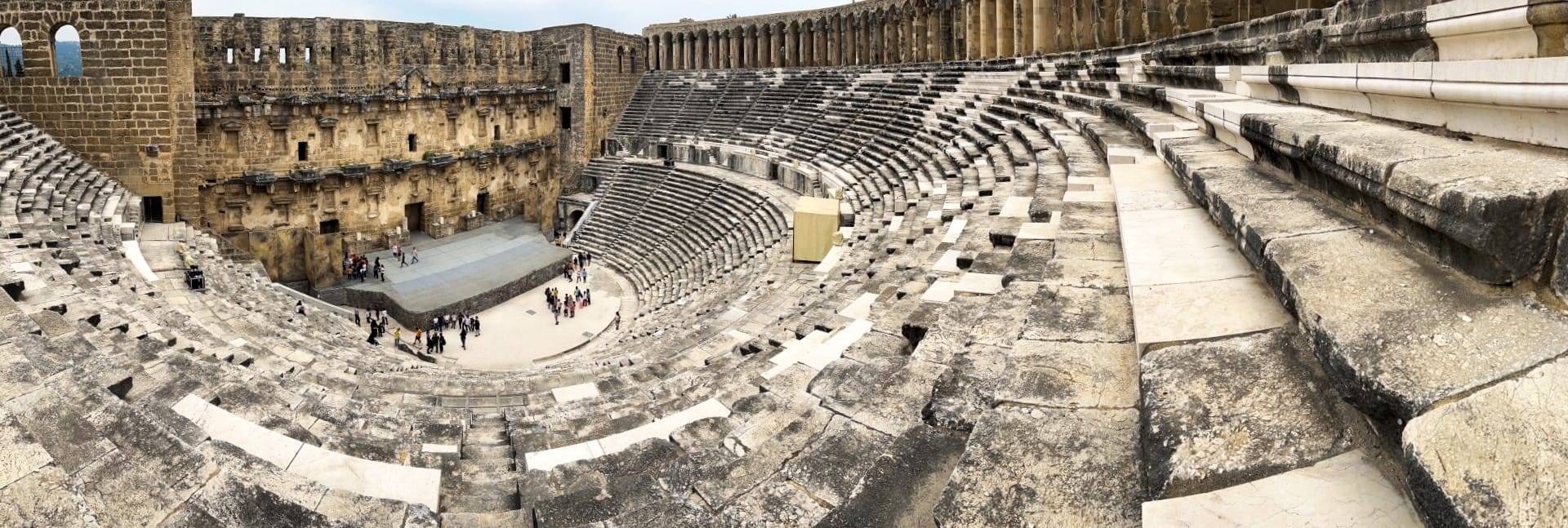
The city of Aspendos was ahead of its time.
Forty minutes east of Antalya is Aspendos, a small town in southwestern Turkey. And, like most of the cities in the Antalya Province, it was often ruled by one of the usual suspects. The Greeks, Persians, and Romans were all serious control freaks.

In the 5th Century BCE, under Persian control, the town amassed great wealth from trading salt, oil, and wool. Oh, and by creating its own currency—that might've helped their economy a bit, too. In fact, Aspendos was one of the earliest cities to mint “coins,” a precursor to what we today know as “money.”
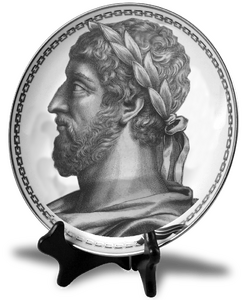
But this Antalya Province town only truly prospered later during the Roman Period. (Around the same time period that Jesus' mom wasn't getting hers. Wink.)
The surprising success of Aspendos' “coins” inspired the Romans to mint other things as well. They soon produced commemorative plates, gladiator cards, memorabilia, and other collectibles. The Emperor's Signature Series of merch sold particularly well under pain of death.
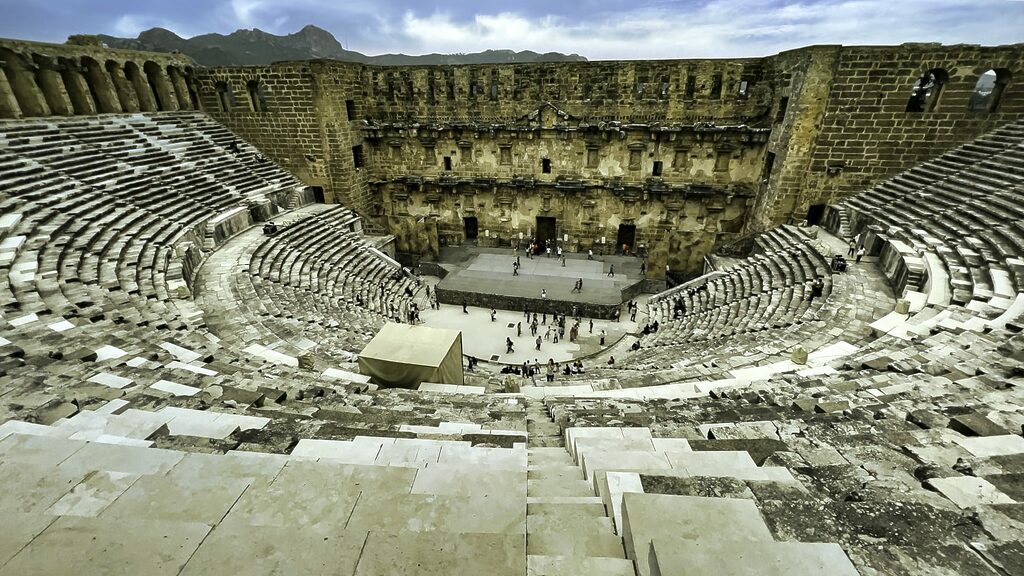
This theater survived for millennia despite never booking Beyoncé or Taylor Swift.
Today, Aspendos is perhaps most famous for its Greco-Roman theater. It seats upwards of 7,500 people and is widely considered the best-preserved theater in the ancient world. Built during the reign of the Roman emperor Marcus Aurelius (160-180 CE), the theater is almost entirely intact. The only obvious gaps are a few missing columns, wooden coverings, and Nevzat's car keys. (Come on, man, where'd you have them last…?)
Aspendos Theater is so undamaged that this 315-foot wide theater is still in use today. Concerts, dance, and professional wrestling often grace its massive stage. In fact, since 1994, the venue has hosted the Aspendos International Opera and Ballet Festival. More incredibly, the Aspendos Theater has operated profitably for almost two millennia without TicketMaster's exorbitant ticket fees, and price-gouging. It was truly a golden era.
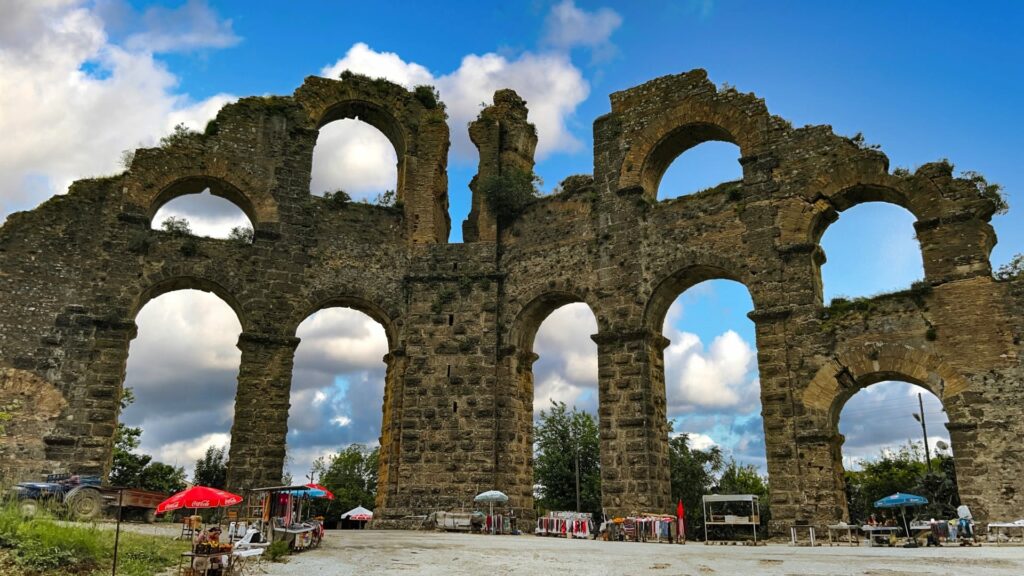
The ancient aqueduct of Aspendos in Antalya Province.
Less well known than its theater—but more interesting to engineers and nerds—is Aspendos' unique aqueduct. This architectural marvel transported water from 12 miles to the town from a spring in the hills north of Antalya Province.

The last mile of which crossed a 1.5 km wide valley, required inventing what's called the triple inverted siphon (see diagram below). Well, that, or the Hydroelectric Pump Station, which would've been arguably harder without electricity.
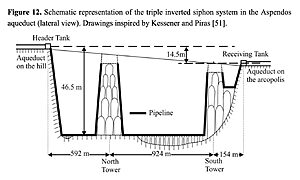
Spring water from the northern hills ran down an open masonry channel to the valley, where pipes carried the water down to the valley floor. Pressurized from the descent, water was then piped up the first inverted siphon built into a 100′ tower.
Continuing down the other side of the tower, water flowed along an aqueduct to a second inverted siphon and tower. Finally a third siphon drew water up to the city's acropolis. It was a feat of Roman engineering that, had they not used toxic lead pipes, might not have caused the downfall of the entire Roman Empire.
Yet, when it came to dealing with all their fatally lead-poisoned citizens, the Romans were nothing if not opportunists. So imagine what happened when they found a bunch of carved-out holes in the cliff-walls of a nearby town?
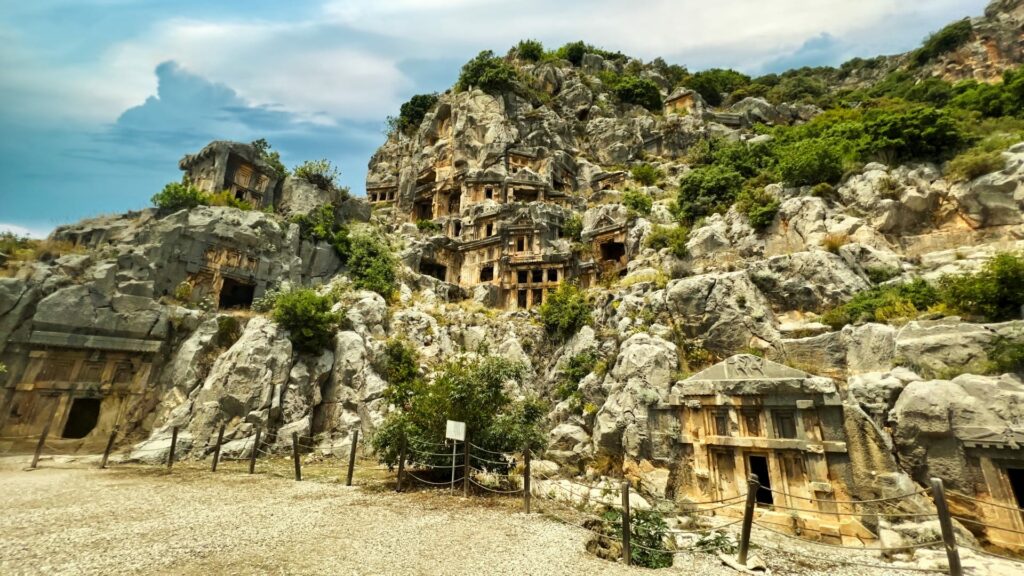
The Lycians of Myra conveniently cut tombs out of rocks.
We then drove west along the Antalya Province coast for two hours. That led us to the ancient city of Myra (not to be confused with Moira, the eccentric former Soap Opera star and spouse of entrepreneur, Johnny Rose). Myra was a Lycian fishing village built during the Iron Age (500-200 BCE).
The ruins of Myra were, for centuries, buried under silt, sand, and gravel. It was slowly deposited by heavy rains, floods, and delinquent dump truck drivers. It wasn't until 2009 that Turkish archaeologists first detected the entombed city using ground-penetrating radar. Lead archaeologist, Nevzat Çevik, was thrilled by the discovery, but saddened that the radar didn't discover his car keys.

Over the next two years, they uncovered two Lycian necropolises (aka, cemeteries) carved into the vertical faces of cliffs. We didn't go inside the crypts because, we assumed, they were stuffed with the putrefying carcasses of those who died from either 1.) Lead poisoning, or 2.) Not buying enough Emperor's Signature Series plates.
Myra is both in Antalya Province, and in ruins.
Myra's main attraction is their network of Honeycomb Hide-A-Corpses, which are pretty unique. But much of Ancient Myra resembles the Island of Misfit Columns and Nondescript Blocks.
That's because archeologists are setting out and arranging all the items of a 100,000-piece jigsaw puzzle. A puzzle that doesn't even come with a box showing the finished product. Frankly, they should set Turkey's sedentary octogenarians to the task—old people are obsessed with puzzles.
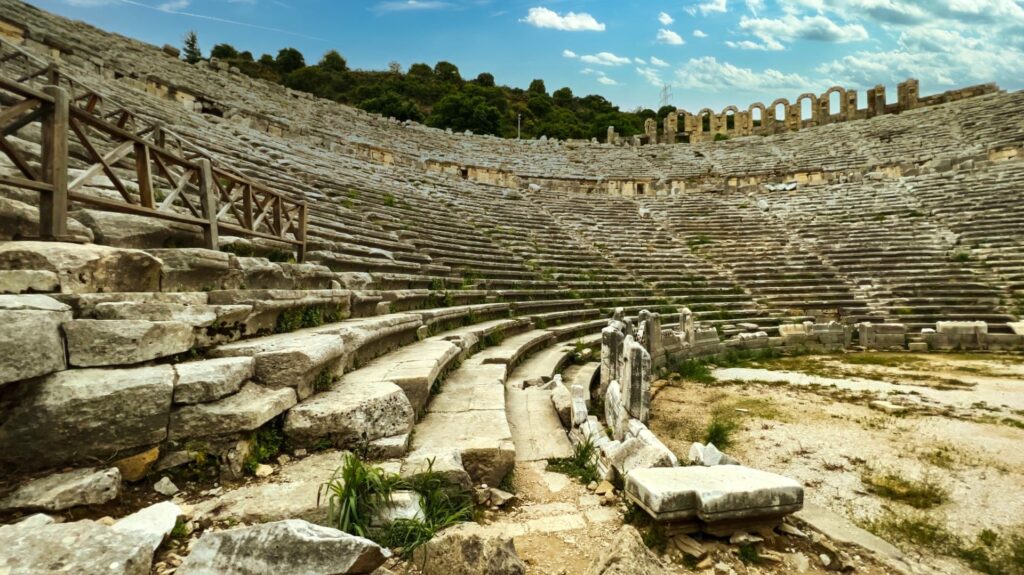
Myra's amphitheater is the exception to the rule.
While the city's acropolis and baths have only been partly excavated, Myra's amphitheater looks fully dug. The theater is one of the city's few surviving archaeological structures, but it's not the original one. The first theater was heavily damaged by numerous Pay-Per-View gladiator events like “Myra-Mania IV!” After which, in 141 CE, an earthquake finished the job.
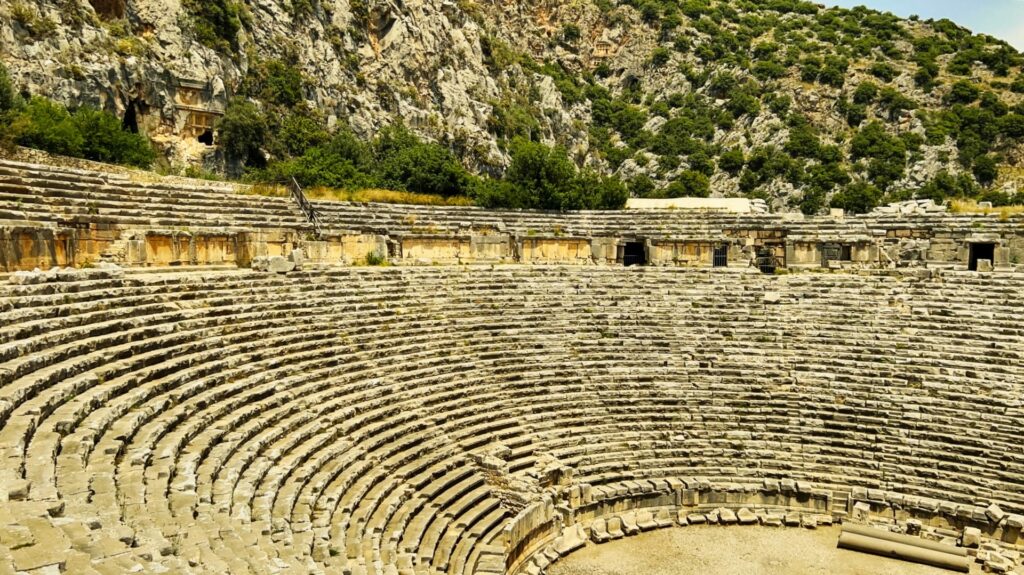
The National Gladiator League proposed a new larger venue a few years later, but the city of Myra balked at footing the bill. The NGL argued that Gladiating was an “essential part” of the city's “culture and identity” and “economic success.”
So, despite vocal protests and massive cost overruns, the NGL finally built a new structure in the 3rd Century CE. And it was enormous—over 100-meters wide to accommodate “Myra Melee XXI!” as well as 12,000 irate, local taxpayers who were thirsty for blood.
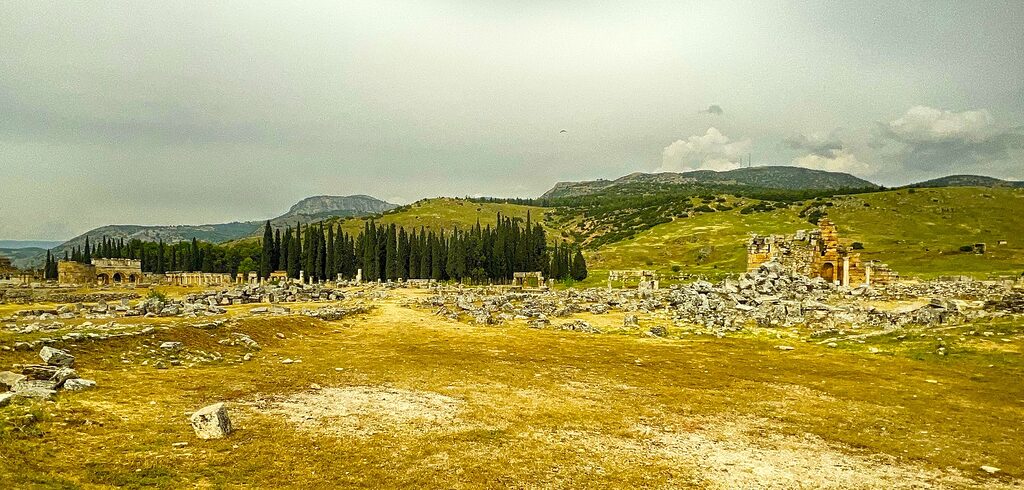
The holy city of Hierapolis in Antalya Province.
Hierapolis (or “holy city”) was an ancient Greek city located in Turkey's Antalya Province. I say was, because, as you can see above, there's not much left of it. The Roman bath, gymnasium, and library are crumbled, but the town's front gate is still somewhat intact (far left).
The Hierapolis Archaeological Museum, on the other hand, is in great shape. It has a bunch of artifacts excavated from the remnants of Hierapolis and surrounding towns in Antalya Province. It's worth a gander before you are drawn away by the area's main attraction.
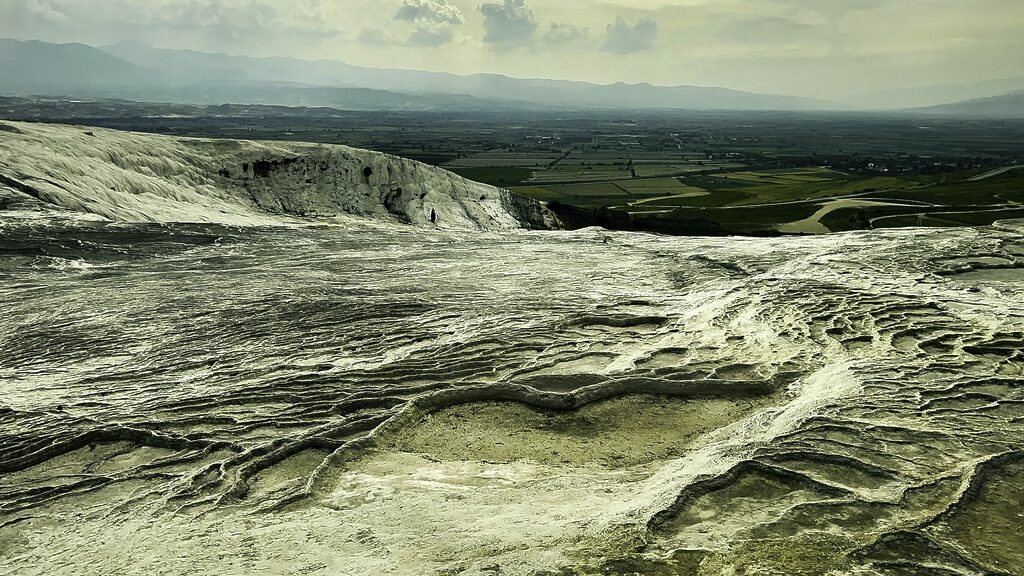
Turkey and its travertine terraces.
The site of Hierapolis is based on its proximity to hot springs called, Pamukkale. Founded as a thermal spa in the 2nd century BCE, Pamukkale consists of 17 hot springs. They supposedly range in temperature from 95°F to 212°F. But we didn't get into the water much past our ankles.
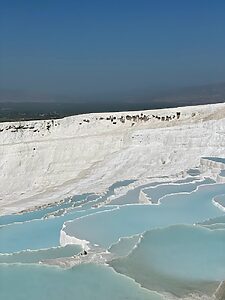
Ancient people believed the water had “healing properties.” But what the water actually had was “extremely high levels of calcium carbonite.” That's a substance found in limestone, marble, and travertine. Soaking in it wouldn't cure any medical conditions unless your doctor prescribed “getting more chalk in your butt-hole.”
I was told awhile back that this weird, natural phenomenon only exists in two places on the planet. And, thanks to serendipity or kismet, now I've seen them both.
The Cotton Castle isn't a castle, nor made of cotton.
The name Pamukkale means “Cotton Castle” in Turkish due to the terrace's fluffy-looking snow-white color. But do not let the appearance fool you. The surface is rock hard and slippery AF when wet.
The second occurrence is outside of Oaxaca, Mexico. Known as “Hierve el Agua” (meaning “the water boils”), this rare petrified cascade pours down from a very high plateau. We made specific plans to see this frozen waterfall because, “When are we ever going to freakin' Turkey?” May of 2023, as it turned out.
(Editor's Note: Also, there are actually nine of these formations on the planet, I recently learned, not two.) Update: I forgot that I visited another one in Tuscany, Italy.
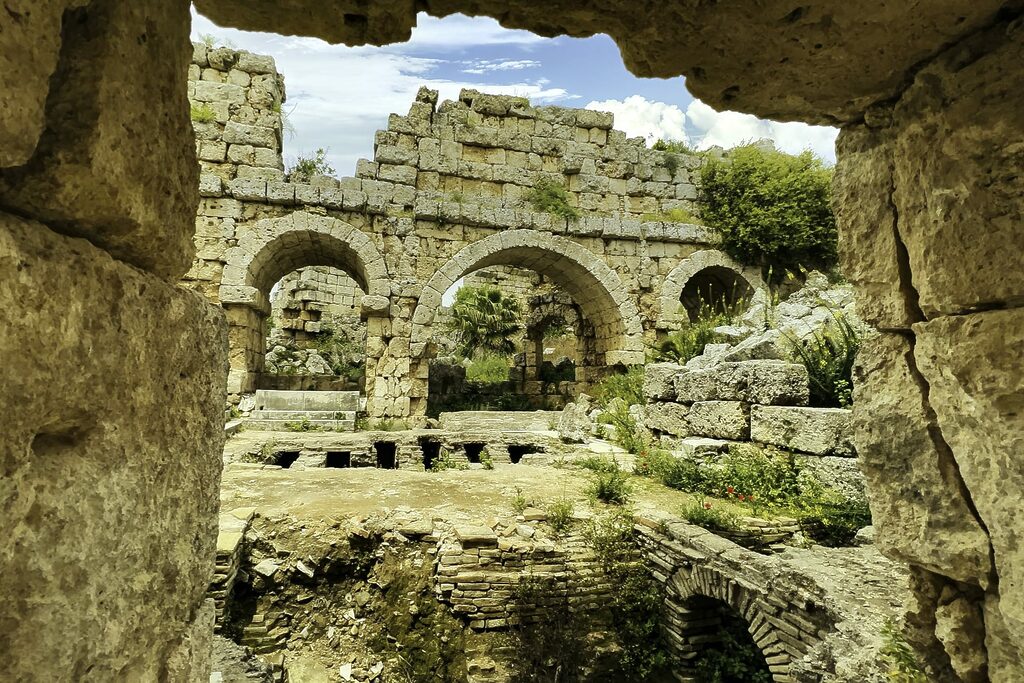
Turkey's Antalya Province has a lot to like, especially if you like Roman ruins.
After traveling around Turkey a lot, I can confidently attest that the Antalya Province is the country's best bit. And, for a lot of the same reasons the Ancient Greeks, Romans, and Ottomans liked the place.
For starters, the weather is better than that of more northern places like Istanbul and Cappadocia. Then there's all the ancient ruins. Veritably littered with Roman architecture, the Antalya Province looks like a flea-market in the parking lot of a Restoration Hardware outlet store.
Of course, if you don't like ancient ruins, you can always stay at a fancy, seaside hotel in the city of Antalya. That way, you can enjoy all the perks of a Mediterranean vacation without the European price tag (the exchange rate while we were in Turkey was the somewhat favorable 27:1).
And while you're there, have a look around to see if Nevzat's car keys are there. Thanks.

